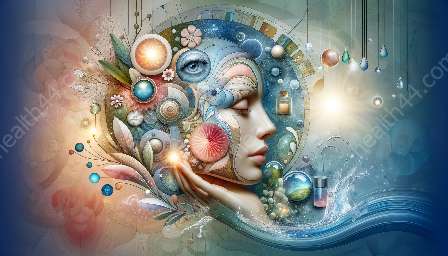Rosacea is a chronic and often misunderstood skin condition that affects millions of people worldwide. It can cause facial redness, visible blood vessels, and even eye irritation. Understanding the symptoms and signs of rosacea is crucial for timely diagnosis and effective management.
What is Rosacea?
Rosacea is a common, chronic, and sometimes progressive skin condition that primarily affects the face. It is characterized by facial redness, visible blood vessels, and in some cases, small, red, pus-filled bumps. While it typically begins after the age of 30, rosacea can also affect the eyes, resulting in dryness, irritation, and swollen eyelids.
Main Symptoms and Signs of Rosacea
The signs and symptoms of rosacea can vary widely from person to person, and the condition tends to fluctuate in severity. Some common signs and symptoms include:
- Facial Redness: One of the most prominent signs of rosacea is persistent redness on the central part of the face, such as the forehead, nose, chin, and cheeks.
- Visible Blood Vessels: Small, red lines that are visible on the skin due to dilated blood vessels are another hallmark of rosacea.
- Swelling and Bumps: In some cases, rosacea can cause the skin to thicken and develop a bumpy texture, often accompanied by stinging or burning sensations.
- Eye Irritation: Rosacea can affect the eyes, causing a range of symptoms, including dryness, burning or stinging, and a gritty feeling, along with swelling and redness.
- Flushing and Blushing: Many individuals with rosacea experience frequent episodes of facial flushing, which can sometimes be triggered by certain factors such as sun exposure, heat, stress, or spicy foods.
Subtypes of Rosacea
Rosacea is further classified into several subtypes, each with its own set of symptoms and signs:
- Erythematotelangiectatic Rosacea: This subtype is characterized by persistent redness and visible blood vessels.
- Papulopustular Rosacea: Also known as inflammatory rosacea, this subtype involves facial swelling, redness, and acne-like breakouts.
- Phymatous Rosacea: This subtype is characterized by thickened skin and an enlarged, bulbous nose.
- Ocular Rosacea: Involving the eyes, this subtype can lead to redness, dryness, and irritation, often resembling other eye conditions.
Factors That Can Worsen Rosacea
Several factors can exacerbate the signs and symptoms of rosacea, including:
- Sunlight and UV Exposure: Sunburn and prolonged exposure to sunlight can trigger or worsen rosacea symptoms.
- Stress: Emotional stress is a common trigger for rosacea symptoms, leading to facial flushing and increased redness.
- Hot and Cold Weather: Extreme temperatures, including hot and cold weather, can aggravate rosacea symptoms.
- Spicy Foods and Alcohol: Consuming spicy foods and alcoholic beverages can lead to facial flushing and increased redness in individuals with rosacea.
- Certain Skincare Products: Some skincare products, especially those that contain harsh ingredients, can irritate the skin and exacerbate rosacea symptoms.
When to Seek Medical Attention
If you suspect that you may have rosacea based on the signs and symptoms you are experiencing, it is important to consult a healthcare professional for an accurate diagnosis and personalized treatment plan. Early intervention can prevent the progression of the condition and improve the overall quality of life.
Managing Rosacea Symptoms
While there is no cure for rosacea, the symptoms can be effectively managed with the help of medical treatment, lifestyle modifications, and targeted skincare routines. It is essential to work closely with a healthcare provider to identify the most suitable approach for your specific case of rosacea.
By understanding the symptoms and signs of rosacea, individuals can take proactive steps to seek appropriate care and minimize the impact of this chronic skin condition on their appearance and overall well-being.


